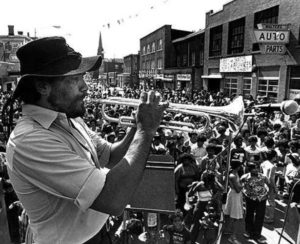FUNDING CUTS IMPACT CT HUMANITIES: Help CT Humanities navigate recent funding cuts and continue our vital work across Connecticut. All donations made to CTH will be matched dollar-for-dollar up to $50,000. Donate today!
Now Viewing:
Imagining Connecticut

Park Street Festival, Hartford 1978
The Park Street Festival is an annual Puerto Rican celebration held in the heart of Hartford’s Puerto Rican community on Park Street.
ReadMore Articles




